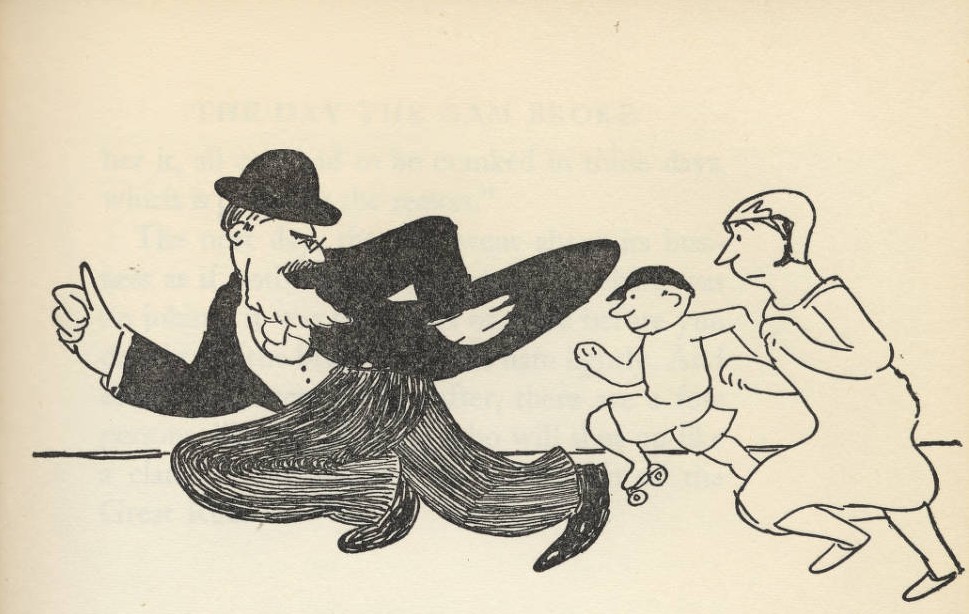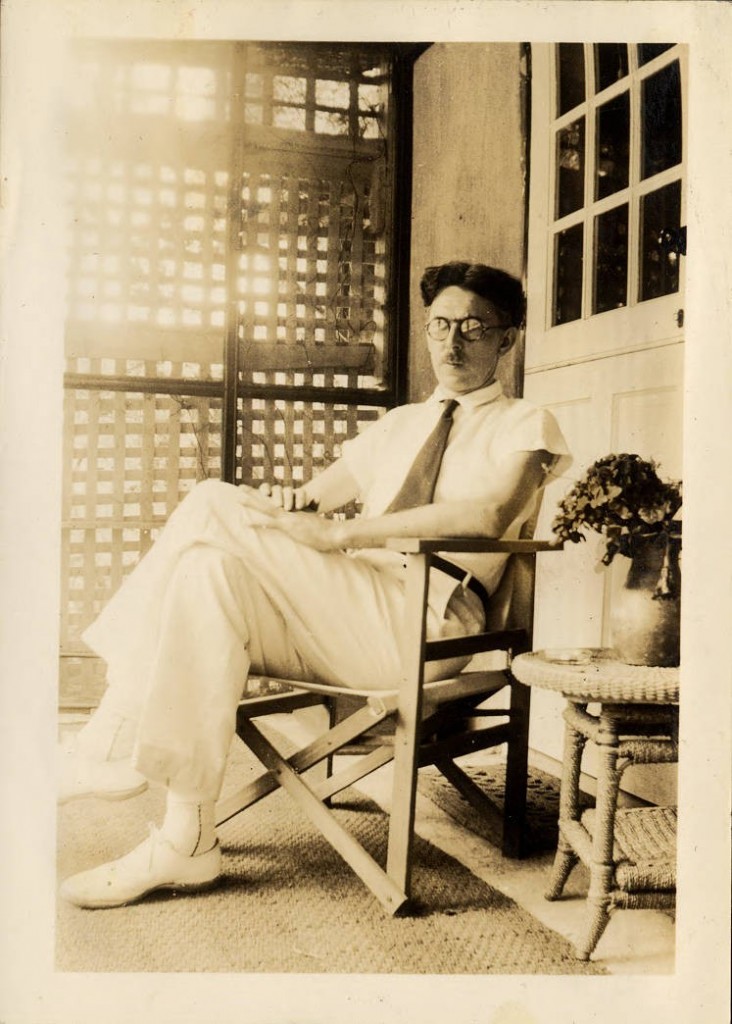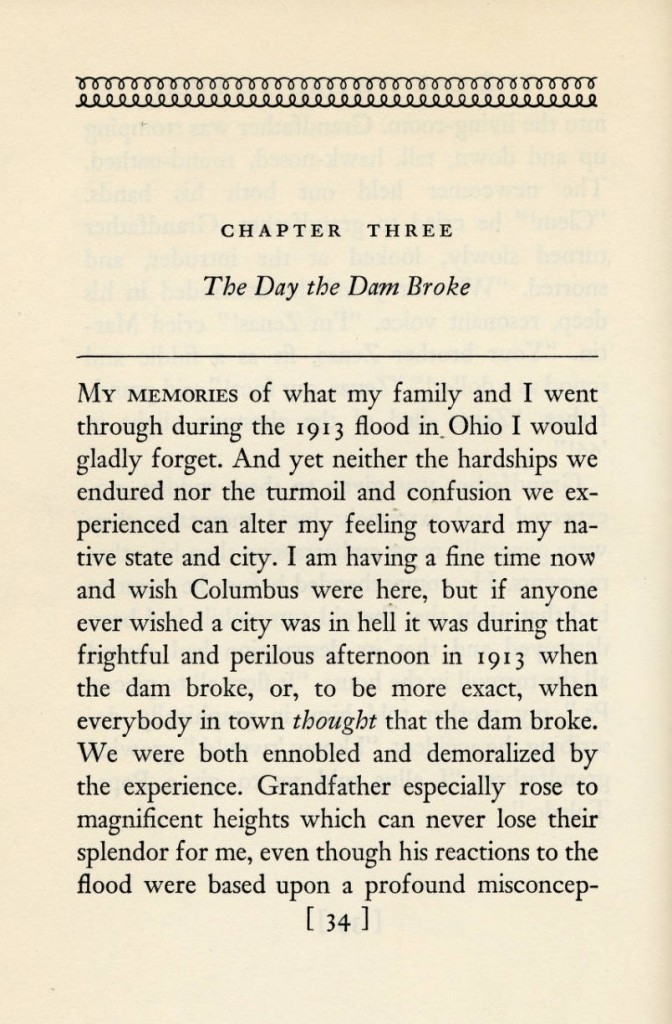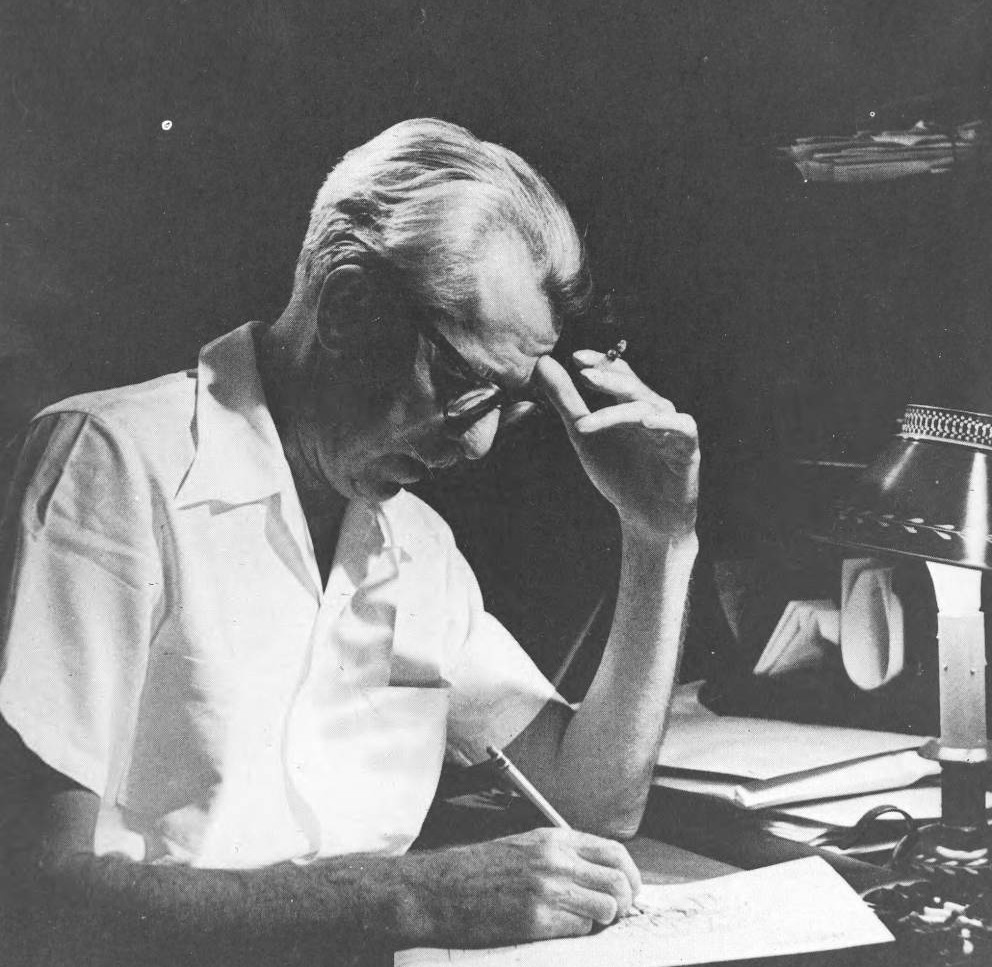Happy Birthday, Mr. Thurber!

Tomorrow, December 8th, is the birthday of one of Columbus’s most famous native sons–humorist, illustrator and author James Thurber. In the preface to his workA Thurber Carnival,he describes the event as follows:

James Thurber was born on a night of wild portent and high wind in the year 1894, at 147 Parsons Avenue, Columbus, Ohio. The house, which is still standing, bears no tablet or plaque of any description, and is never pointed out to visitors. Once Thurber’s mother, walking past the place with an old lady from Fostoria, Ohio, said to her, ‘My son James was born in that house,’ to which the old lady, who was extremely deaf, replied, ‘Why, on the Thursday morning train, unless my sister is worse.’ Mrs. Thurber let it go at that.
He was born to Charles Thurber, a civil clerk, and Mary “Mame” Fisher Thurber. His father, who had dreams of being an actor or lawyer, is said to have been the inspiration for the small, slight man typical of Thurber’s stories. Young James was partially blinded during a boyhood game of “William Tell,” when an arrow launched by his brother struck him in the eye. Unable to participate in games and sports with other children, he developed a rich fantasy life, which would serve to inspire his later fiction.
Between 1913 and 1918 he studied at The Ohio State University, then went on to work as a code clerk in Washington, D.C., and the American embassy in Paris, and then as a journalist for the Columbus Dispatch and later the Chicago Tribune in Paris. In 1926, Thurber went to New York City where he was a reporter for the Evening Post before joining the New Yorker.

It was at the New Yorker where he developed his clear, concise prose style, and where fifteen of his books first appeared in print. His first book, Is Sex Necessary, was written with friend and fellow author E.B. White in 1929; it featured Thurber’s iconic line drawings and instantly established him as a true comedic talent. He left the New Yorker in 1933, but remained a contributor, and in the 1950s published a series of modern fairy tales for children. Some of his other best-known works include My Life and Hard Times, The Male Animal, My World—And Welcome To It, and The Thirteen Clocks.
His eyesight became worse in the 1940s, and by the 1950s his blindness was nearly total, but Thurber nevertheless continued to compose stories in his head, and played himself in 88 performances of the play A Thurber Carnival.
Thurber passed away in 1961, and is buried at Columbus’ historic Greenlawn Cemetery. His legacy is still felt around town in the form of the Thurber House, which is open to the public at 77 Jefferson Avenue; East High School, where he held the office of class president his senior year; and the Thurber Theater at Ohio State, named to recognize one of the school’s most notable alumni. See what other Thurber materials are available through Ohio Memory, in honor of his 118th birthday this weekend!

Thanks to Lily Birkhimer, Digital Projects Coordinator at the Ohio History Connection, for this week’s post!



Leave a Reply
You must be logged in to post a comment.